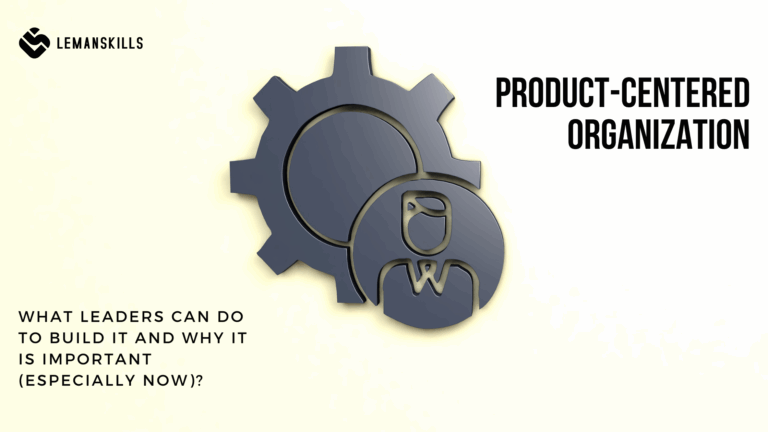We talk a lot about communication. In fact, I am the person who teach and preach the whole idea of Communication Intelligence. And yet, we don’t talk strategically enough about one thing that is a phenomenon in many organizations: Communication Debt. I see and hear during workshops and one-on-one mentoring leadership sessions that I run a lot of thoughts, problems connected with that, and I wonder why we talk about it so much, and not doing a lot?
So, I’ve decided to spend time today and unpack a little bit this subject. Let’s see what the communication debt is, when it appears in organizations and what we can do to address it, before it’s too late.
What is Communication Debt?
When we’re thinking about debt in overall, the first thing that comes to our mind is money. Then a lot of organizations, especially tech-oriented, are talking about technology debt (we didn’t invest in the past in the infrastructure or software, integrations, architecture: So, we have a technology debt). And the same thing is with the communication debt for me. The root cause is a lack of investment in communication processes.
Lack of investment and/or lack of priority on all the communication processes that are in the organization on individual, team and organizational level. The communication debt is a gap between the level of understanding, data and information and contracts people should have and we actually have in a certain moment of time in the organization.
And it can appear in many different setups: Between employees, peer-to-peer; between employee and manager, a manager and their manager; between the executive team and board or board of directors outside of them; including investors, stakeholders, shareholders, you name it. Again: This is a gap that is between what we should have in the organization and what we actually have. And not many people have awareness that they have a communication debt because… there is a lot of assumptions around. And many companies that I work with right now, and I worked with in the past, have on board people who are assuming that others know what they need, what they should or what they want.
So, if we base our communication strategy on assumptions… It is not a huge surprise that people are not happy, their engagement is dropping dramatically. Gallup Institute “State of the Global Workplace 2025” Report shows that employees’ and managers’ engagement level is lower and lower. And the interesting thing is that it is even lower in the management basket than the employee basket. Of course, the differences are not very big, but they’re visible.
I’m not surprised when I see that kind of results: People are less and less engaged. They are less motivated intrinsically. They look for a new work more often than 10 years ago, or even 3 years ago. And yes, you can say that this is connected to the generational change. But what the important thing is that the younger the generation is, the better they are in setting boundaries and a need for information. Transparency is one of the biggest values Gen Z has. So, this is something that for me, personally and professionally, as a leader is important to understand. Because I’m asked to support organizations, teams, a specific leader when there’s already a fire, when there’s already a drop in engagement, in efficiency, that the team doesn’t deliver tasks on time or value or projects on time. When people are quitting the team, especially tech talents that are hard and expensive to replace. And most of the time it’s too late.
When the Communication Debt Appears?
From everything I’ve observed for the last 10 years, working in different organizations and different teams, especially IT and tech, I can tell that the communication debt appears when there is no prior or very little priority on communication in overall.
We’re not learning how to tailor our communication, we’re not investing in communication intelligence (CQ), because there is a lot of different items (more important in our brain) on the list to cover on a daily basis. And this is totally okay that tech teams need to focus on tech, because this is your genius; as well as HR people should focus on HR, and finance people should focus on finance.
Every single person has a genius zone. But there is also a thing named “transferable skills”. And transferable skills relate to every single position, every single job that you are going to have in your future because you can copy and paste them and basically start using them right away. When you join a new team, organization or a new setup, business-wise and private-wise.
And another thing is those skills are the umbrella (The Umbrella Skills, I call them that way). You can have your specific Subject Matter Expert skills and competencies, pieces of knowledge, but you also have the umbrella skills that like a real umbrella, are on the top of everything that you do, regardless of the situation, or the context. And this is something that I treat like the ultimate set of skills, like the power skills. Because if you don’t have them, you can have the most beautiful tech skills in the planet, but they will be useless. And now it’s hurtful. You need to have strong algorithmical communication skills, because it is a part of your intelligence. Communication intelligence is a real thing. And I can’t emphasize that enough.
So, when there’s a very low or no priority on communication, when we assume that people know more than we ask, or we provide information, even if they appear for us as boring, repetitive, you name it. When you don’t invest your time and effort and energy and money in learning how to communicate better, there will always be a debt, no doubt about it. The culture of the organization determines what kind of communication, what channels of communication, what frequency of communication people need. And it will determine what kind of communication strategy we need to use. Is it a local organization? Is it a complex global organization? Depends on the time zones they work in. There are many different elements to take into consideration. So, I’m not giving you a one-size-fits-all solution.
The communication debt is not visible daily. It becomes visible when there’s a crisis, a change, when there is something that we want to implement or transform, whether it’s a team or organization level, doesn’t really matter. It is visible then. Because daily, people are just working. They are covering their tasks better or worse, but we are all working somehow. We are handling over there. But the consequences of the communication debt are immense.
What Can We Do?
We covered a lot of diagnostics so far. But what really counts is what we’re going to do about it? What can you do on a solution level to shrink the communication debt?
The first thing is contracting or and re-contracting with your people.
We assume that people know what to do. They know because they signed the contracts, at the very beginning of their job, right? But we were talking about it only during the recruitment process. And what happened next? People come, they start working, and this is it (most of the time).
And when the circumstances change, sometimes we have a conversation, sometimes we just make a statement. Starting next month, we are going through a transition or a change. Here’s how it’s going to work like that. If you have any questions, please let me know. And this is not a contracting process. This is the statement. The contracting is a conversation, where both sides have a chance to say what they think, what they reflect on, what is their opinion on something. The contracting is not assuming: It is asking for people to say out loud what they hear from us.
You want a real tip? Avoid those two: “Do you have any questions?” “Is everything clear?” Because let’s be honest here: 90 % of the time the answer is “yes, everything’s clear. No, no questions.” You know why? Because this question is garbage. People don’t want to look stupid, so they don’t answer this question most of the time. Of course there are people who will ask some questions, but most of the time you’ll get nothing. And then there are consequences of that (undelivered tasks, missed deadlines, poor quality). That’s why I prefer to transform this question into the into the ask, something like: “You know what, I want to check with myself if I described it clear enough; Please describe for me how did you get it?” So, I check with myself. This is it. A person describes and we see: Was it clear or not? And then we can add more information or clarify something right away.
Number two, tailoring communication. This is something that I talk about a lot in this podcast because this is what I do. This is who I am. This is my area of expertise in Genius Zone, and I have a mission for people to know how to tailor their communication. It can be more efficient and effective because we waste so much time in these processes, we go into conflicts, misunderstandings tor assumptions that people know or we get mad at people, angry that they are not doing what they’re supposed to do (but they’re supposed to do those things only in our brains).
It’s not because they’re lazy or disengaged: Most of the time they just don’t know. We expect for them to know, but we don’t say anything out loud.
Most of the time the communication is tailored to us, not to other people. We assume that if we like something, they will do like something like that as well. And this is not true most of the time, we like it or not. The communication that will be smarter when you listen, observe, read more carefully, you invest 10 -15 seconds at the very beginning of the conversation if you don’t know somebody to listen and watch the way they communicate. Having that information, you can stretch yourself a little bit and all of the sudden… you start using more tailored approach. It is not manipulation. It is stretching yourself to get what you need out of the communication process.
The last thing for today: Communicate transparently and regularly, even if you don’t have 100% of information.
Communication requires responsibility. And we are responsible as leaders in the organization, regardless of the level, for communicating transparently and to be up to date. It is not possible to wait for a perfect moment to communicate a certain thing, especially if this is something hard for people. But the longer we wait with communication, the more gossip there will be on the corridors or online groups. I can assure you of that. If you don’t have 100 % of the information, share 10%. 10 % is better than zero. Most people will tell you that. And I’m doing those polls from time to time, asking a question: “Do you prefer to have 10 % of knowledge now or 100 % when the time comes?” And let’s be honest here: “The time comes” can be in months. And I didn’t have for years the answer to this question that people I would prefer to wait to have 100 % of confirmed information. Peoples’ brains hate the empty space. So, to fulfil it, they… Make things up. Simple as that.
If you have an influence in the organization to inform people about a piece of project, piece of information or a status of a certain thing, do it. Don’t hesitate. Just be clear about it is not like a 100 % piece of information. “It is the current status of where we are; if anything changes, I’m going to let you know.”. The more transparent and honest you are, the better for the trust, engagement and people will feel safer. Even if there is a lot of unknowns, there is no risk or very small risk of increasing the communication debt in that kind of solution.
This is not a rocket science, but we hesitate so much to do it. Should we tell people about it? Should we not? Should we wait or not? And most of the organizations, most of the leaders are waiting and they’re waiting too long. And then what happens? They lose people on the way. Most of the time it’s very simply avoidable.
The Bottom Line
Most people know that’s logical to invest in communication. We work and live together, we like it or not, so it’s a necessity to be as adaptive and conscious as possible in this area. Especially if you are a leader, it’s your job to think about it, learn, do better. It’s not something we learn at school (though we totally should), but as adults we can make better decisions about what we’re doing with it.
Communication debt is preventable. We can fill out the gap and never come back to it, it’s not that hard. The key thing here is that we focus and prioritize it, because without this approach, we’re going to stay the same. In the realm of frustration, wasted time and effort.
Which path do you want to choose?




